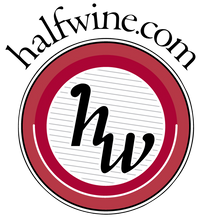Sparkling
Champagne
Champagne Blend
Cork
Dry
No Oak
Sustainable
ABV 12%
Tasting notes
A never-ending stream of fine bubbles rising with delicate aromas of white flowers and apple and pear ending with hints of peach and apricot. A beautifully long finish culminating on a mouth-watering touch of brioche. A perfectly balanced champagne! Ideal as an aperitif or with white meat or fruit desserts.
Why we recommend this wine
We have spent many a happy wine tasting visit in Champagne and never miss the area in which Duménil’s vineyards are located as we love the champagne they produce.
The wine
The grapes are sourced from vineyards in Chigny-les-Roses, Rilly-la-Montagne and Ludes, all Premier Cru. Perfectly balanced thanks to the equal proportions of the three traditional Champagne grapes; Pinot Meunier brings fruitiness, Pinot Noir lends body to the blend and Chardonnay adds finesse. A blending of 50 % 2016 and reserve wines from 10 different harvests from 1996 to 2015. Aged on lees for at least 3 years in their cellars, each bottle is disgorged 4 months before dispatch and given a dosage of about 8g/l made of aged wine and cane sugar.
The wine estate
Champagne Duménil was founded in 1874 and owes a great deal to a happy combination of skill in both viticulture and in wine-making that was a rarity at the end of the XIX century. As well as tending vines, Emile-Paul Duménil, the founder, also owned a grocery and a café in Chigny-Les-Roses. In order to retain the unique nature of the chalk soil and the subsoil, manual labour is favoured as much as possible. To encourage the vines to send their roots deep down into the chalk is crucial for the development of complexity in our wines and we achieve this thanks to the diversity of flora and fauna in the vineyards which we promote in many ways such as ploughing the soil in each plot and allowing grass to grow between the rows. Compaction of the soil is avoided by the use of a chevillard (a lightweight tractor) and of horses. This prevents water run-off, improves drainage and encourages better root growth. In addition ploughing improves the aeration of the soil. After pruning, the off-cuts are ground into a mulch to create a natural, organic fertiliser.
champagne-dumenil.com
Food and wine
This Champagne goes particularly well with pastry canapés. It’s also a wonderful match with poultry cooked in a sauce, or with fruit tart served as dessert. Refer also to our food and wine pairing guide, click here.
Did you know?
According to the scientist Bill Lembeck, there are approximately 9,800,000 bubbles in a glass of Champagne, and 25 million bubbles in one half bottle of Champagne. For an average glass, they can emerge at a rate of approximately 30 bubbles per second. But as it ages champagne loses its bubbles – we have had a 30 year old champagne from a famous maker that had no bubbles at all but it was still a great wine!
A never-ending stream of fine bubbles rising with delicate aromas of white flowers and apple and pear ending with hints of peach and apricot. A beautifully long finish culminating on a mouth-watering touch of brioche. A perfectly balanced champagne! Ideal as an aperitif or with white meat or fruit desserts.
Why we recommend this wine
We have spent many a happy wine tasting visit in Champagne and never miss the area in which Duménil’s vineyards are located as we love the champagne they produce.
The wine
The grapes are sourced from vineyards in Chigny-les-Roses, Rilly-la-Montagne and Ludes, all Premier Cru. Perfectly balanced thanks to the equal proportions of the three traditional Champagne grapes; Pinot Meunier brings fruitiness, Pinot Noir lends body to the blend and Chardonnay adds finesse. A blending of 50 % 2016 and reserve wines from 10 different harvests from 1996 to 2015. Aged on lees for at least 3 years in their cellars, each bottle is disgorged 4 months before dispatch and given a dosage of about 8g/l made of aged wine and cane sugar.
The wine estate
Champagne Duménil was founded in 1874 and owes a great deal to a happy combination of skill in both viticulture and in wine-making that was a rarity at the end of the XIX century. As well as tending vines, Emile-Paul Duménil, the founder, also owned a grocery and a café in Chigny-Les-Roses. In order to retain the unique nature of the chalk soil and the subsoil, manual labour is favoured as much as possible. To encourage the vines to send their roots deep down into the chalk is crucial for the development of complexity in our wines and we achieve this thanks to the diversity of flora and fauna in the vineyards which we promote in many ways such as ploughing the soil in each plot and allowing grass to grow between the rows. Compaction of the soil is avoided by the use of a chevillard (a lightweight tractor) and of horses. This prevents water run-off, improves drainage and encourages better root growth. In addition ploughing improves the aeration of the soil. After pruning, the off-cuts are ground into a mulch to create a natural, organic fertiliser.
champagne-dumenil.com
Food and wine
This Champagne goes particularly well with pastry canapés. It’s also a wonderful match with poultry cooked in a sauce, or with fruit tart served as dessert. Refer also to our food and wine pairing guide, click here.
Did you know?
According to the scientist Bill Lembeck, there are approximately 9,800,000 bubbles in a glass of Champagne, and 25 million bubbles in one half bottle of Champagne. For an average glass, they can emerge at a rate of approximately 30 bubbles per second. But as it ages champagne loses its bubbles – we have had a 30 year old champagne from a famous maker that had no bubbles at all but it was still a great wine!




